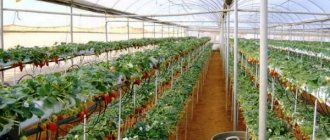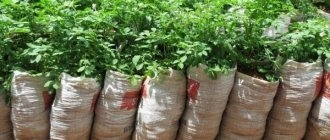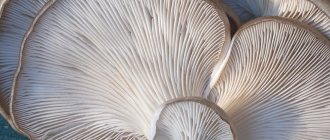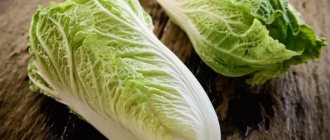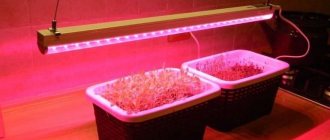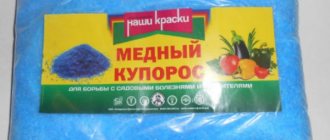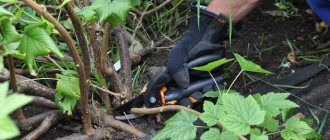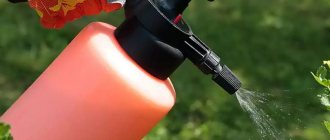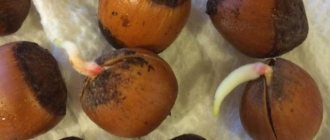Compost is a complete fertilizer for garden beds. The only drawback is that it takes a very long time to ripen; you have to wait 1–2 years. But it is possible to prepare a quick dressing. This will require natural ingredients and garbage bags.
Unlike feeding in special boxes in bags, it matures several times faster. For example, if you start preparing it in the spring, by autumn it will already be ripe and ready for fertilizing plants. To make proper fertilizing, you must follow 5 rules.
Gathering ingredients
For the base, you can choose ordinary weed grass that grows in any area. Coniferous and deciduous trees are also allowed. Fruit, maple, oak, and birch leaf products are ideal for compost.
The main rule when collecting components is that they must be young. They need to be collected before flowering and seed formation. If these conditions are not met, compost will only increase the growth of litter.
If leafy tree products are selected for composting, it is important to avoid damaging the roots when collecting them. To do this, it is recommended to use a special garden vacuum cleaner or a hand rake.
You can sow useful grass between the rows on the site. When the grass comes up, mow it with a lawn mower, then put it in a bag.
About raw materials for fertilizer
I use various plant residues as raw materials. For example, I put weeds, grass clippings, bark, pieces of branches, vegetable tops, cardboard, paper, fruit scraps, etc. in bags. It would be a good idea to put down the removed turf, which is also highly recyclable. In addition, I also add bird droppings and rotted manure to the bags. My fertilizer matures faster, since I additionally fill each bag with wood ash (one liter jar is enough) and ammonium nitrate (just one handful). There is an opinion that fertilizer must be enriched with vermicompost and soil bacteria. Special solutions are made from the latter. In fact, these components are not required. The fact is that the bag already contains the remains of garden soil, which contains the necessary microorganisms.
Women's jeans: before you buy them, you need to pay attention to one detail
"Dad is offended." Agata Muceniece about her relationship with Priluchny after the divorce
Rare shot: Viktoria Isakova showed her grown-up daughter from Yuri Moroz (new photo)
Bookmark material
Thick, black plastic garbage bags are suitable for storing raw materials for composting.
To prepare the fertilizer, it is necessary to create drainage at the bottom. For this:
- use sawdust or branches, laying them in a thick layer;
- place the prepared raw materials on top;
- alternate it with layers of food waste and soil;
- If the mixture turns out too dry, moisten it with a small amount of water.
Do not compact the bags too hard. It is important that air enters the compost. It is also recommended to make small holes.
Which compost bags to choose
Many gardeners ask what bags are suitable for making home compost. It is better to choose thick bags. Garbage bags are fine if they have a high density. Cheap bags will immediately tear and the leaves will fall apart. It is better to choose construction bags. It is advisable to choose dark colored bags. Woven polypropylene construction bags can be different. There are dense bags, and there are thin ones (from under sand). Thin bags turn into dust in the sun. Use large bags of 70 liters or 160 liters.
Adding composting accelerators
To speed up the maturation of compost, as well as improve its organic composition, it is recommended to add accelerators. You can prepare them yourself.
Best recipes:
- To prepare the mixture you will need chicken droppings, nettles and warm water. Combine the components in proportions: warm water – 20 parts (of the total volume); nettle – 5 parts; chicken manure - 2 parts. Leave for 12 hours. After this, carefully pour it into the general mass with the prepared compost.
- Dissolve 200 grams of sugar and dry yeast in a liter of water. Mix well and pour through a small hole in a plastic bag.
When preparing compost, in addition to weeds, you can add nettle or comfrey. This will speed up the ripening of the fertilizer and supplement it with organic matter.
What can you make compost in bags with your own hands besides leaves?
Quick compost is made from grass, rotten apples and pears. In summer you have to often weed the beds. All weed will do just fine. The only requirement for weeds is to clear the soil. The roots of the weeds need to be thoroughly cleaned from the soil and placed in a plastic bag. Weeds should not be covered with soil, as they will germinate and instead of fertilizer you will get a mobile bed of weeds.
There are often cabbage stalks left in the refrigerator. They will perfectly complement bags of future compost. Peeling potatoes, apples, beets and carrots will also come in handy.
Care during maturation
As the compost matures, it is necessary to monitor its condition. It is important to regularly stir the contents of the bags so that the foliage is evenly rotted.
It is necessary to monitor the moisture level inside the bags and control the sufficient supply of oxygen. To create the necessary conditions, you should alternate 2 stages:
- Seal garbage bags with adhesive tape, thereby creating airtight conditions for green matter inside.
- Open the bags, allowing oxygen to penetrate inside. If necessary, make additional holes in the bags.
What can and cannot be put into compost
To prepare compost correctly and quickly, you need to add a variety of components to it.
And the more varied, the better. All plant waste that can be composted in a bag is usually divided into two groups. Nitrogenous components:
- mown grass,
- small weeds with roots,
- tops of cultivated plants,
- leaves and stems of large weeds (without flowers and seeds),
- kitchen waste,
- turf.
Carbon components:
- fallen leaves,
- paper,
- needles,
- hay,
- sawdust.
It is advisable that all these “ingredients” be available. But if something is missing, it's not a big deal. In fact, compost can be obtained even from just grass mixed with soil and ash. Compost from leaves in a bag can be obtained by mixing litter with green tops or spilling with urea. They won't be as nutritious as multi-ingredient compost, but they're better than nothing.
There is also a list of organics that should not be added to our lazy compost. Because it decomposes more slowly, and the speed of cooking is important to us. So, the following are not suitable for a compost bag:
- branches and large chips,
- citrus peels,
- tops of diseased plants (for reinsurance),
- stems of large plants (corn, sunflower),
- moldy bread,
- bones and remains of animal food,
- oil,
- roots of perennial weeds (dandelion, sow thistle, milkweed, etc.),
- feces of predatory and omnivorous animals.
These are the rules. It is easy to see that compost with the richest composition is easy to prepare in spring and autumn. In spring there is a lot of dry grass, it is easy to collect rotted leaf litter and pine needles, fresh green grass and weeds appear, as well as the tops of early crops (radishes, for example). In autumn there are even more plant remains of all kinds, but it is no longer so warm. Therefore, we recommend filling the bags in the fall, and relying on compost in the spring, when the bags have time to warm up thoroughly under the sun.
Tips for those who prepare their own plant food
When preparing your own compost in garbage bags, you need to know when it is ripe and ready for use. Tips on what signs you can use to determine the maturation of compost fertilizer:
- the green mass becomes brown;
- The texture of the compost is loose and loose;
- in appearance it resembles clay of a homogeneous structure with the exception of small protruding branches.
If the grass mixture in the bags matches these descriptions, it is time to use it to fertilize the plants.
Experienced gardeners assure that compost prepared in garbage bags is more effective than ready-made commercial fertilizers. It is important to follow the rules for preparing the mixture to obtain the desired result.
Compost readiness time
When using bags for ripening compost, the readiness period for raw materials is 1-3 months - this is one of the fastest ways to prepare a compost heap. The rate of maturation depends on the storage conditions of the bag, the composition of the compost, and the use and effectiveness of additives. Readiness is determined by 2 factors: the condition of the raw material to the touch and smell.
The finished compost mixture has a dry and loose state with a stable temperature equal to the ambient temperature. If the pile heats up when loosening, then the compost is not yet ripe. The smell of finished compost is similar to forest or earthy.
How to choose bags
Depending on the amount of waste and weeds growing in the garden, the volume of the bag is selected accordingly. It can be either 120 l or 250 l. You must leave room for taping to create a sealed environment.
Anaerobic bacteria die under the influence of ultraviolet radiation, so the material must be black, which does not allow them to pass through.
Otherwise, rotting processes will begin inside and the compost will be spoiled. Light-colored bags will do, as long as they are white and not transparent. These are used by builders to remove waste after renovations. They are durable and do not stretch. It will be difficult to break this one.
If you buy black ones, which are sold in rolls in supermarkets, then you need to first check them for strength. The packaging usually states what the density of polyethylene is. The strongest ones are needed, since hydrogen sulfide is released during the cooking process anaerobically.
This is an aggressive, caustic substance that can corrode any material. They definitely won't last two years. Compost bags should not be stretched, as they may tear when moved to another location, and the compost will have to be moved. Under the influence of air and light, microorganisms will die, everything will have to start all over again, which means that the ripening time will increase.
Biodestructors
EM preparations are so-called compost maturation accelerators; without them, quick fertilizer cannot be prepared. The grass in bags is watered with a solution of bacteria, and many gardeners additionally crush the components. The principle of operation of biodestructors is that they enter the bag from the outside as a ready-made substance, and do not multiply in it naturally.
The concentrated product contains several types of microorganisms that ensure the breakdown of the necessary components - hydrogen sulfide, nitrogen and carbon. The most common biodestructors are Baikal and Doctor Robik. There are other EM drugs on sale:
- Vostok EM-1;
- Gardener;
- Shine;
- Hasiyar;
- EM-A;
- EM-Bokashi.
BAIKAL EM-1
Contains lactic acid bacteria and yeast that process nitrogen. But Baikal is best suited for aerobic composting (with the participation of oxygen). Humus in bags with this solution will be ready in 2-3 months.
Doctor Robic
Product from an American manufacturer with anaerobic bacteria. Sold in bulk form or as a liquid concentrate. When filling bags, all layers must be poured or spilled with this product. Doctor Robik is a line of drugs, it contains “Compost Accelerator” No. 209. The 60 g package is intended for a volume of 1.5-2 m³, that is, the bag is enough for 3-4 bags.
Nitrogen-containing residues
You should not plant any one plant or group from the same family. Gardeners have noticed that, for example, the green mass of pea stems or other legumes without soil will not produce complete humus. Compost will have a strong ammonia smell because it contains a lot of nitrogen. For the development of compost bacteria, nitrogen-containing raw materials must be in a ratio of 1:30 to the rest of the mass.
Fertilizer from potato broth for seedlings. Gardeners have many different secrets. They are useful, effective and much safer than store-bought drugs. Here,…
Manure
This is a valuable nutritious raw material, but it is prohibited to use it fresh. It releases methane, which causes plant roots to simply burn. But during the compost maturation process, pure manure can be used to speed up the decomposition of the carbon component. Manure contains nitrogen, which starts the process of rotting, and, as is known, the temperature inside the mass quickly increases.
